Selected in OUTSIDE Magazine as one of the top 25 trips to take in 2018.
Christopher Columbus definitely had a thing for landing on eastern shores, and in 1492 he found himself looking out upon Cuba’s eastern coastline and emphatically declaring it “the most beautiful land human eyes have seen.” We think Columbus had the right idea in this case. Today eastern Cuba gets a fraction of the tourists that the western part does and has an intoxicating essence. It’s more raw. More tempestuous. Filled with mountains and trees, bays and beaches and a sense of the wild. It’s here that the revolution started when Cubans first sought independence from the Spanish, and later, in the 1950’s, for a new form of government.
Join us for this immersive kayak tour of Eastern Cuba and discover for yourself its unadulterated allure. We paddle from two to four hours on five of our days. We also go into the mountains for a different perspective and to visit Cuba’s highest waterfall. Less tourist trappings and regulated infrastructure give each town an undampened authenticity. Closer to Caribbean islands such as Jamaica, the towns hold a much more palpable Caribbean paradise edge—one bedecked in palm-fringed beaches and unspoiled emerald wildernesses spotted with parrots. And of course, soused in rum.
Additional Information:
On our 8 day Support for the Cuban People tour, traverse the east through Eastern Cuba’s most beguiling towns. Christopher Columbus found himself enthralled with Gibara and Holguín’s azure coasts, and you can stand next to statues honoring the explorer and gaze upon the views that went down in history hundreds of years ago. Buena Vista Social Club’s iconic song “Chan Chan” inspires our travels as we make our way to Mayarí and Cuba’s largest waterfall. We also find our way to the quirky island of Cayo Saetía where African game was once imported for sport, but now zebras and camels simply enjoy the Caribbean views. Tap your feet to the beat—or learn some new moves.
“Go East, young man” and discover the richness of Cuban culture that thrives outside of the Havana Tropicana limelight. It’s Cuba auténtica. It’s Cuba adventuras. And it really might be the most beautiful land your human eyes have ever seen.
Supporting Documents
___________________
If kayaking in Cuba is not what you are looking for, our sister company offers many amazing, US legal,Support for the Cuban People tours including:
Cuba Yacht Tour - only private catamaran tour in Cuba.
Cuba Walking Tour - National Parks of Cuba focused walking adventure...with some snorkeling!
Cuba Bike Tour - First Support for the Cuban People bike tour of Cuba.
Images & Videos
Itinerary
Day 0
Please book your own flights to Holguin, Cuba, currently served by American Airlines with daily flights. You can either arrive on Day 0 - the day before the tour start date, or on Day 1. If you arrive on Day 0 then you are responsible for your own airport transfer into the city. Taxis are readily available and cost about $25. We are happy to make your accommodation arrangements for you for the extra night. Since some guests may arrive on Day 1, if you arrive on Day 0, our office will inform you of the meeting time and place Day 1.
Once we have everyone together on Day 1, the tour will officially start with a walking tour of the city of Holguin.
Since all flights to Holguin originate in Miami, for many people it may work best to fly to Miami on Day 0, spend the night and continue to Holguin the next day. We are happy to offer guidance with scheduling your travel to and from Cuba, and our office staff is ready to answer any questions you may have.
Note: Travel in Cuba requires a flexible attitude. Our days are full, and as required by U.S. law, we have a full-time agenda of Support for the Cuban People activities. Cuba has it’s own beat and things don’t always run on time. The activities and visits listed are not guaranteed but we endeavor to do our best to provide the content intent of this supportive program. Visiting developing countries can be eye-opening and life-changing, and hopefully visiting Cuba is both. Accommodations may not be up to the standards you are used to. Sometimes the hot water or air conditioning doesn’t work. We ask all our guests to appreciate the authenticity of your cultural encounters as well as the people, food, culture, and adventures that are exceptional in their difference. Our Cuba Unbound Tour Leader promise to do their best to make this a fascinating and educational experience.
Day 1
Arrive Holguín, Cuba
After everyone is gathered, we explore Holguin. Though it’s no Havana, Holguín has its own appeal with its 18th century churches and colonial plazas and is known as the “city of parks”. It’s a real pleasure to wander the streets, find a bench in one of the parks and watch the world go by. There’s a stout walk up to the top of Lomas de la Cruz, crowned with a cross that has stood here since 1790 and from the base of which are grand vistas over the surrounding landscape.
Day 2
To Puerto Padre, Kayaking, Farm Lunch and Jazz Performance
From Holguin we drive west through sugar cane fields and country landscapes toward the small town of Puerto Padre. We arrive at our kayaking launch and paddle about two hours on the large, protected Bay of Puerto Padre. Our local guides tell about life as a fisherman in this small town and we may see fishermen throwing their nets, or searching for shrimp. After our paddle we drive a short distance to our lunch at a local farm to enjoy a traditional Cuban feast of roasted pig! The lovely family welcomes us and we learn from them about this carefully-tended farm that has been in their family for generations.
After lunch we head to the small town of Puerto Padre, brithplace to Emiliano Salvador, the father of Latin Jazz, and also Juan Pablo Torres, a legendary trombone player. A small group of musicians continues their tradition and we meet with them to learn about this special history and hear their music. After this special private performance we drive about two hours northeast to the charming port town of Gibara, check into our casa, and walk to a nearby paladar for dinner.
Day 3
Kayaking, Cigar Factory, and Limestone Caves
Charming and slowly seductive, wily yet understated—Gibara is ideal for travelers disenchanted with throngs of tourists and looking for a Cuba that remains much as it has been. Our morning starts after breakfast with a short drive to our launching point for a kayak paddle on a gentle river that flows towards the Bay of Gibara. We enjoy the passing scenery without a window obscuring the view. Mangroves and birds are a highlight of the paddle. The river arrives in Gibara Bay and another 20 minutes has us washing up against the shores of the coastal fishing village.
We return to our casas to change clothes and then go to a local paladar to support another fine Cuban entrepreneur. Then it’s off to learn about one of Cuba’s most important economic contributors – tobacco and cigars. We visit a tobacco factory with an information tour with one of the factory employees. The workers rise early to roll cigars and show an obvious pride in their work.
Then it’s off to visit the Caverna de los Panaderos, caves tucked under limestone hills located just outside of town. Our local guide leads us through the caverns that hold a labyrinth of 19 mineral galleries where glittering stalactites catch the minimal light. Wander the dark caves in search of “the mammoth”—an elephantine knob—as well as a lake lying in silent, calm anticipation with Tolkien-esque mysticism. Our guide is a fount of knowledge, providing excellent tutoring in the geology of the caves and eastern Cuba.
In the evening we go to another fine restaurant for a seafood feast!
Day 4
Kayaking in Gibara Bay and Walking Tour
We spend our day exploring more of Gibara and its cobalt bay. There’s some dispute over where Christopher Columbus first landed. Gibara, specifically the Silla de Gibara rising, is believed to have been first seen by Christopher Columbus in 1492; meanwhile, Holguín claims he first landed at Cayo Bariay, and both lay claim to Columbus’ proclamation of it being “the most beautiful land human eyes have ever seen.” Decide for yourself as you explore Gibara today!
It’s a short walk to the beach where our kayaks wait. We cross the bay and then paddle up another river line with mangroves. We’re likely to meet local fishermen out fishing for shrimp. It’s a great morning of paddling and learning.
We then meet with Señor Jose Toledo for a stimulating opportunity of supporting locals. Toledo’s a host of local radio and TV show as well as a master of several languages including English, French, Portuguese, and Russian. He gives us a tour of the town, bringing to life its once-vibrant history as a cultural and trade center as well as its still-vital annual hosting of the international film festival, Festival Internacional de Cine Pobre. We also visit the Natural History Museum that further document’s the area’s rich flora and fauna.
There’s a bit of time to relax before dinner at an excellent paladar where you can taste some more Cuban food prepared with a local flair.
Day 5
Visit Cuba’s Highest Waterfall and Town of Mayarí
Begin the day with a delightful breakfast as we embark on an eastern journey towards Mayarí, tracing the famed “Ruta de Chan Chan,” a 360 km route immortalizing Compay Segundo’s iconic song. Passing through Macarné, Cueto, and Mayarí, among other charming towns in the Sierra del Cristal, we discover the cultural echoes of the song.
Upon reaching Mayarí, our path leads south into the mountains, navigating through the Parque Nacional la Mensura and the aromatic Pinares de Mayarí, an elevated region perfumed with the scent of crisp pine settling above the cloud line.
Our ultimate destination is the Gran Salto del Guayabo, Cuba's second-highest waterfall, standing over 100m tall. Guided by a local expert, we embark on a quality hike through the lush tropical forest adorned with orchids, where the Cuban Trogan, the national bird, may be spotted. At the summit of the highest falls, we revel in a panoramic view of the cascading waters and surrounding mountains. We then descend to the lower falls, enjoying the refreshing waters as they froth down the rock face into a waiting pool below.
Following a satisfying lunch, hike, and swim, our descent takes us back to the town of Mayarí. Traverse through this agriculturally rich part of Cuba, potentially encountering ox or horse carts transporting goods. Arriving at our Casa Particulares (Bed & Breakfasts), we have time for a leisurely stroll through town before a delightful dinner.
Day 6
From Mountains to Sea, Kayak & Snorkel Cayo Saetía
Today we leave the mountains on a road with spectacular views to the plains and coast below. It’s about a two hour drive to one of Cuba’s more idiosyncratic spots as we travel to Cayo Saetía. On the way we stop for some time to explore the small town of Mayeri and visit with local merchants. Then, a bit further to the east, is Cayo Saetía, an island located in Cuba’s largest bay, Bahía de Nipe. In the ‘70s and ‘80s, Cayo Saetía was a favorite haunt for communist apparatchiks looking for the thrill of some large wild game hunting a la Hemingway himself. Fidel and Raul both stayed here. Now, the animals are protected in the wildlife park rather than vulnerable to passing bullets. That being said, Cayo Saetía is the closest to an African Safari Cubans get on the island with its 19 species of exotic, introduced animals including zebras, camels, antelopes, ostriches, buffalo, wild boar, bulls, and peacocks.
Our exploration begins in our kayaks, as we paddle the western shores of the island. It’s a beautiful coastline with transparent waters. After about a two-hour paddle, we exit on a soft white sand beach and walk to the nearby resort which is our home for the night.
Day 7
Kayak and Snorkel Cayo Saetia
Today is a day of beaches, snorkeling and kayaking. With our local guides who help us better understand the history of this place as well as the underwater marvels, we have a relaxed day. Here we find some of the most sublime coastal scenery in all of Cuba. The white sand beaches and secluded coves lend a Caribbean air to the otherwise African ambience. We take to the kayaks and glide along the azure waters enveloping unique beaches and interesting rock formations. We also have the opportunity for a clearer look at the underwater worlds surrounding the small island while we snorkel in the warm waters.
After our day of adventure, we rest and relax in the simple beauty of a villa on the island. In the evening we enjoy another dinner in the refreshing night air before we retire for bed.
Day 8
Depart or Add on a Fabulous 5 ½ Day Walking Tour Extensoin at a Special Price
Today we return you to the airport in Holguin in time for early afternoon flights home, or better yet, continue with us for one of our walking/hiking extensions to explore more of eastern Cuba’s natural and revolutionary history in our signature, active style. See below:
PART II – Extend your stay with one of our fabulous itineraries to explore more of the east!
We offer Cuba’s Wild East, and our focus is on hiking and exploring Alexander Humboldt National Park as well as the town of Baracoa. This itinerary follows the perimeter of the island, circling back to two nights in Santiago de Cuba. Our other option is the Origins of the Revolution, and visits the Castro’s birthplace and the mountains of the Sierra Maestra where the Revolution took hold. This trip also includes time in Santiago de Cuba.
** If you arrive a day early, it’s easy to get a taxi from the airport to the city for about $20-$25. We are happy to arrange an extra night's accommodation for you as an extension to the tour.
Dates & Rates
Supplementary Information
Our trips can also be booked on-demand for small and large groups every Sunday. Please inquire with us to start the booking process for your group today!
Dates: Guaranteed departures for 6 or more people**! Please inquire today to begin the booking process.
Rates for 2024:
$3190 per person (based on double occupancy)
*Up to 16 spaces available (depending on tour date, number of solo travelers, and available accommodations)
Single Supplement: $500
If you are traveling solo and prefer private accommodations (pending availability) you may elect to pay the single supplement fee. If you are traveling solo and wish to be paired up with another solo traveler of the same gender in order to avoid the single supplement fee, please let your Adventure Consultant know at the time of booking. We will do our best to find another traveler to pair you with, however if there is not another solo traveler of the same gender willing to share on your trip, you will be charged the single supplement fee.
Included:
- Experienced Cuba Unbound Tour Leader
- Experienced Cuban Group Guide
- Specialized activity guides based on activity of trip (kayaking, biking, hiking, etc.)
- Specialized equipment needed for activities such as kayaks, bikes, helmets, paddles, personal flotation devices, etc.
- Private pre-tour orientation meeting
- Cuba Unbound hand-crafted itineraries including; carefully chosen people-to-people activities, personal visits and presentations with experts in a variety of fields and topics and; access to exclusive experiences
- Accommodations as noted in the itinerary
- All meals as noted in itinerary
- Certification of travel to Cuba under the U.S. Department of Treasury general license
- Small group size (Custom tours for 2, group tours are 16-18)
- All entrance fees to include events and activities
- All in-country ground transportation
- Clean drinking water available at all times
- Gratuities for specialized guides and presenters, luggage handling, restaurant staff, and activities throughout tour
- Cuba Visa (a $80-120 value)
Not Included:
- Round-trip air to/from Cuba
- Guide gratuities (all gratuities for drivers, servers, and others who help us during our tour are included)
- Personal expenses such as souvenirs, gifts, additional drinks/entertainment, and incidentals
Reviews
FAQ & More
What about security and comfort in Cuba?
Cuba has good structure in place for visitors coming to see the island. Although relations with the United States are changing quite rapidly at the moment, and Americans might view Cuba as a country in transition, the political climate inside Cuba is stable. Additionally, its people are friendly and there is a remarkably low crime rate in comparison to other relatively poor countries. Travel to Cuba does require a flexible attitude as there may be a lack of hot water at your hotel, schedules may not run exactly on time, and finding many things we take for granted (soap, toothpaste, snack foods) can be a challenge. That said, the people of Cuba are kind and welcoming, and they want us to get to know their people, culture and island! Because our tour is an active tour with sea kayaking, hiking and transport, there are inherent risks which would be the same regardless of where you are traveling. Several people on our staff have visited Cuba recently so feel welcome to contact us with any concerns or questions.
I'm a US Citizen, can I travel to Cuba?
You bet! As of September, 2015, you still can't embark on a self-guided vacation, or spend days at a beach resort drinking your favorite adult beverages all day, but you can travel to Cuba under an approved itinerary. There is a general license procedure to travel to Cuba independently or as a tour group, but if you travel with SKA we take care of this for you!
U.S. travelers can still go to Cuba legally! We've been taking Americans to Cuba since 2015 and operate most of our tours under two categories of legal travel for persons of U.S. jurisdiction. These are specifically Support for the Cuban People and for some tours, People-to-People Educational Travel. We operate these tours under an OFAC (the Office of Foreign Assets Control) general license, under section 31 CFR § 515.572(a)(1) to provide travel services to U.S. travelers to Cuba.
To learn more about travel to Cuba, start here to visit our website dedicated only to Cuban travel.
For more information on Cuba travel entry requirements, please see here.
What is the weather like? When should I visit Cuba?
Our favorite time to visit Cuba is the dry season, between November and April, when the high temperatures are generally between 75 and 80 degrees F, lows generally in the 60's F, and the average rainfall is at its lowest. This is also the time of year when you will avoid the summer crowds and the worst of the Caribbean humidity. For detailed weather information, visit Cuba Weather.
Do I need a VISA to travel to Cuba?
You might hear it called a visa, but Cubans call it a tourist card (tarjeta de tourista)...so to keep things straight and cover all bases, we'll call it a Cuban Tourist Visa card. And yes, you will need this to travel to Cuba. It is just as important as your passport. Most commercial airlines will provide it for you when you check-in at the airport the day of your departure. If you are wanting to purchase the Cuban Tourist Visa Card ahead of your departure youc can do so through Cuba Travel Services. We always recommend checkng with your airline about the Cuban Tourist Visa first because you get it for a lower price.
What are my flight options to Cuba?
There are now many options for commercial flights between the US and Cuba! While the vast majority of travelers will fly in and out of Havana’s Jose Marti International Airport, there are ten cities with international airports on the island, so there are many possibilities. Airlines with direct flights from the US include American, Delta, United, Southwest, JetBlue and Alaska. American Airlines in general offers some of the best flights for our 2017/18 itineraries, but the right airline will depend on your home location and preference. It's also possible to fly to Cuba from Mexico or Canada, or other countries.
Can I extend my trip to Cuba beyond the scheduled tour dates?
f you are a U.S. citizen, any additional travel must meet the requirements of one of the approved travel categories for U.S. travelers. In the case of your tour, that category is "People to People Travel". As of June 16, 2017, individual travel under the People-to-People category is not allowed. However, we can arrange a custom, guided extension as a private group tour should you wish, or you can choose from one of our standard tour extensions. Please contact one of our Adventure Consultants if you want us to plan these extra days for you.
What are the luggage recommendations?
It is always best to check with the airline(s) that you will be traveling with for specific luggage allowance policies, particularly if you are traveling directly to Cuba from outside the United States. Most airlines charge for checked bags, and we highly recommend NOT checking bags to Havana. The airport is often very busy, with multiple flights coming in at once and limited baggage carousels in some terminals.
One thing that still might make carrying on all luggage difficult: the standard TSA limitations on liquids and gels. As many of these items are not so readily available in Cuba, if you need larger volumes of any such items, one idea is to purchase them at the your departure airport after you pass through security.
I heard health insurance in mandatory, is that true?
All travelers to Cuba must have health insurance as required by law in Cuba, and the company providing your insurance plan must have the ability to make payments from a non-U.S. banking institution. If you are a Canadian or UK traveler, buying additional coverage may not apply to you. The mandatory level of insurance required to travel to Cuba may be included in the cost of your commercial flight to and from Cuba. Guests may purchase supplemental coverage at their discretion and we highly recommend it, as the mandatory level of coverage included with your ticket is quite low, both for medical coverage in case of illness/injury while on your trip, as well as for emergency evacuation or repatriation. We have partnered with Travel Insured International, who does have a health insurance rider for Cuba travel, for this supplemental coverage. The cost of this additional coverage will vary based on coverage amount, age of traveler, and length of travel.
What is the currency in Cuba? Can I use the US Dollar?
The short answer is probably not. However, this is another travel detail that is rapidly changing and will likely continue to change in the coming months. For now, it is best NOT to count on debit and/or credit cards working in Cuba. Most U.S. banks are not set up in Cuba due to the trade embargo as well as lack of infrastructure. However, you may want to check with your bank to find out if your card might work while in Cuba as some banks and credit card companies are slowly establishing agreements and infrastructure to allow use of their cards in Cuba. If that is true of your card, we recommended asking what the foreign transaction fee will be (it is likely to be higher than fees assessed in other countries). If your card will work there, taking it as a backup to cash as well as for any unexpected emergencies might be reassuring for you. Even if you have a card issued by a non-U.S. bank, many establishments do not accept them, and technical issues with credit and ATM/debit cards are frequent in Cuba. Furthermore, if they do work, purchases, withdrawals, and especially cash advances can be slow to process, and all transactions are likely to come with exceptionally high foreign transaction fees.
What is a Casa particular?
This is something you'll hear in Cuba a lot. A casa particular is a private accommodation or private homestay in Cuba, very similar to a bed and breakfast, although it can also take the form of vacation rental. On ROW's Cuba tour, you can expect to stay in a mix of traditional hotels and casas particulares, making for a full and authentic visit to Cuba. For more information on casa particulares, read our blog post here.
What is the food like in Cuba?
Cuba's food has not been its strongest attraction, as trade embargoes and the general economic situation has limited access to ingredients over the past few decades. However, things are rapidly improving as the political situation changes and restrictions ease. Traditional Cuban cuisine is a unique and interesting blend of African, Caribbean, Spanish, and Native American food, with a variety of dishes served. We have carefully selected unique and authentic restaurants that will give you a taste of this varied and authentic cuisine. However, you may encounter very simple meals along the way as well. Rice, beans, and local fruits are likely to be common items on your plate. For vegetarians and those with gluten-free dietary needs: while we believe there will always be something for you to eat, you may find more limited options in Cuban restaurants and hotels than you are used to. You man consider bringing some of your favorite packaged snacks (ideally small items, and total volume within reason). There are also small neighborhood markets throughout Cuba, where yogurt is a common staple and may be a good protein substitute. In general, and with all things Cuba, we encourage a flexible attitude. Having said that, we understand that sustenance and dietary needs are critical to an enjoyable trip, and our guides will do everything they can to accommodate you within the limits of our tour.
What electrical outlets are used? Will I need an adapter or converter?
The electrical current in Cuba is 110V with a current of 220v (same as the U.S. and Canada). Therefore, you should not need a converter. However, while most outlets are of the same type as those in the U.S. and Canada, there are a variety of outlet types in certain parts of Cuba, so to be safe we recommend bringing a plug adapter.
Let's talk about Cuban cigars and rum; how much can I bring home?
US Travelers: As of September 2020 it is not permitted to bring Cuban cigars or rum back to the United States. This may change in the future, so check the U.S. State Department website for updates.
Will my cell phone work in Cuba? What about internet access?
We strongly advise you to approach your Cuba Unbound Tour as an opportunity to completely unplug for 8 days. If you embrace that attitude, we believe you will have a most authentic Cuban travel experience. While cell phones are not uncommon in Cuba, there are almost no U.S. cellular companies with service and infrastructure in Cuba. Likewise, internet service is very limited and spotty at best in most locations. There may be WiFi in some of your tour hotel lobbies, however you will likely need to buy an Internet card to access WiFi, hotels often limit how many cards they sell (or they run out), speeds are slow, and access is generally unreliable. There are increasing numbers of internet cafes, and other locations with service, however considering your full itinerary, we strongly encourage you to take advantage of the opportunity to be disconnected from the digital world during your time in Cuba. If there is an emergency, our guides are equipped to communicate using phones and internet as needed. Having said that, you may want to check with your specific cellular service provider and ask if they have coverage in Cuba. And if you must have cellular access, an unlocked quad-band GSM cell phone will work in Cuba. You will need to buy a SIM card as well however. Cell phones can also be rented in Cuba but are in very short supply.
With the new policies announced by the U.S. Government June 16, 2017, can I still travel legally to Cuba?
Yes! The new policies did change some aspects of travel to Cuba. Most notably, individuals may no longer travel under the category of educational "People-to-People" travel on their own. This category is reserved for travel within a group tour, such as the tours Cuba Unbound offers.
Will the June 16, 2017 U.S. policy changes impact Cuba Unbound's tours in any way?
The new rules prohibit direct commercial dealings with the Cuban military or security services. The Cuban military has a large branch involved in tourism and owns and manages some of the country's hotels. Thus, once the new regulations are enacted, it's possible that our tours will no longer be able to stay in hotels owned or managed by the military. Since we used very few of these in the past, this isn't a very big issue.
What are your Terms and Conditions?
Please see our full Terms & Conditions HERE.
Can I drink the Water in Cuba?
Generally it's best to drink filtered tap water or bottled water. In an effort to reduce the use of single-use plastic, we encourage you to pack a wide-mouth water bottle with a filter built in. There are many brands available.
Is ice safe to have in my drinks?
If you are getting a drink at a hotel bar, or other bar establishment, the ice is most likely made with filtered or bottled water, so should not cause any issues.
Can I eat salads in Cuba?
Cubans pride themselves on proper hygiene and food handling. The restaurants we use on our tours are very good and eating any salads or raw vegetables that are served is fine.
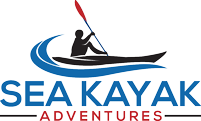
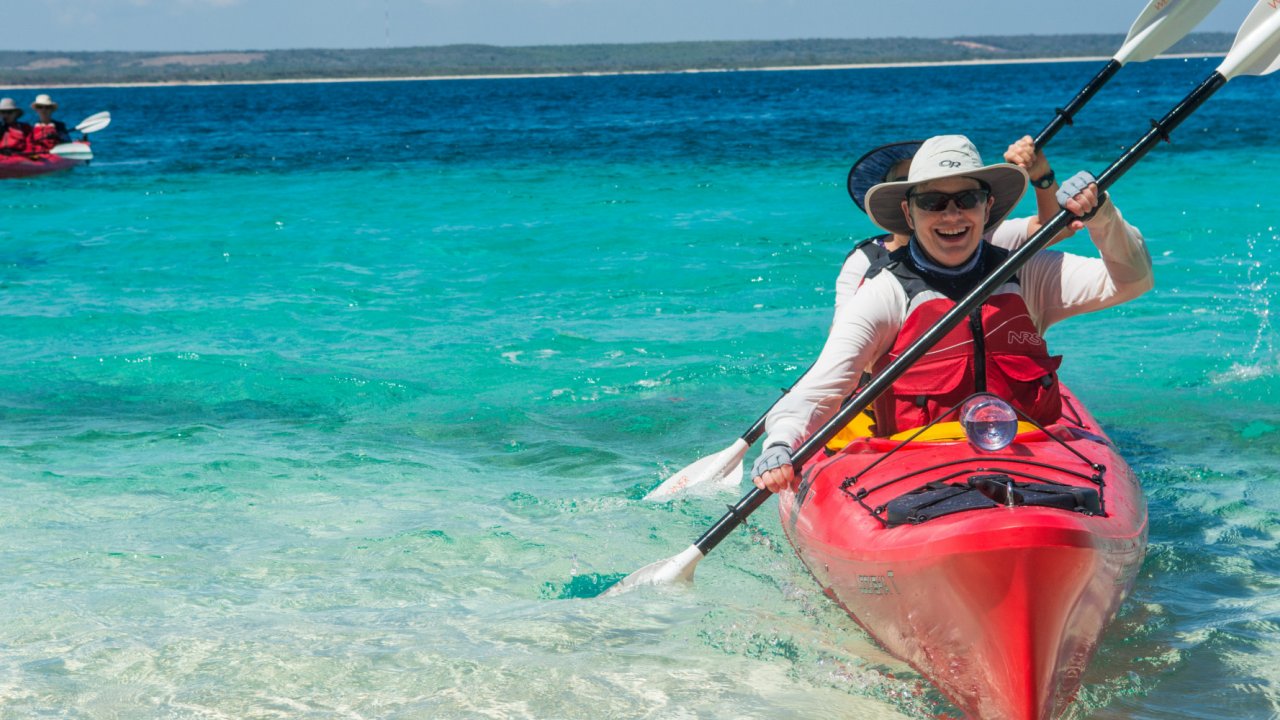
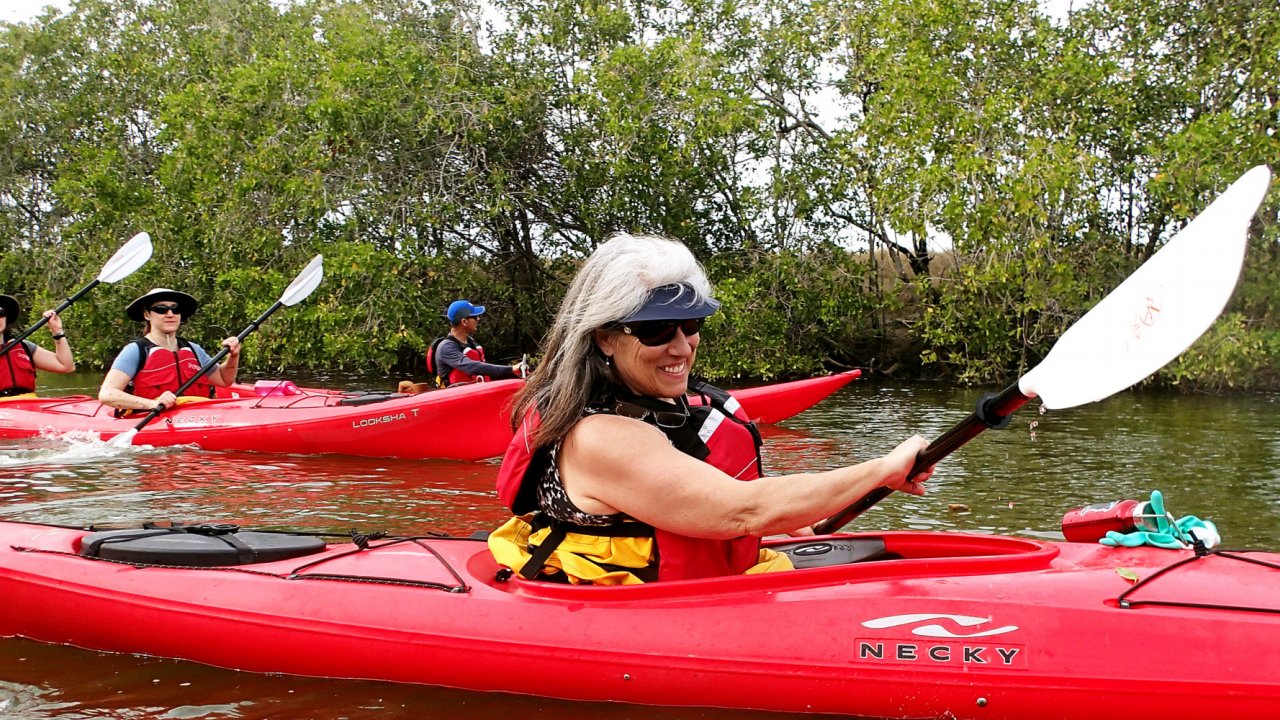
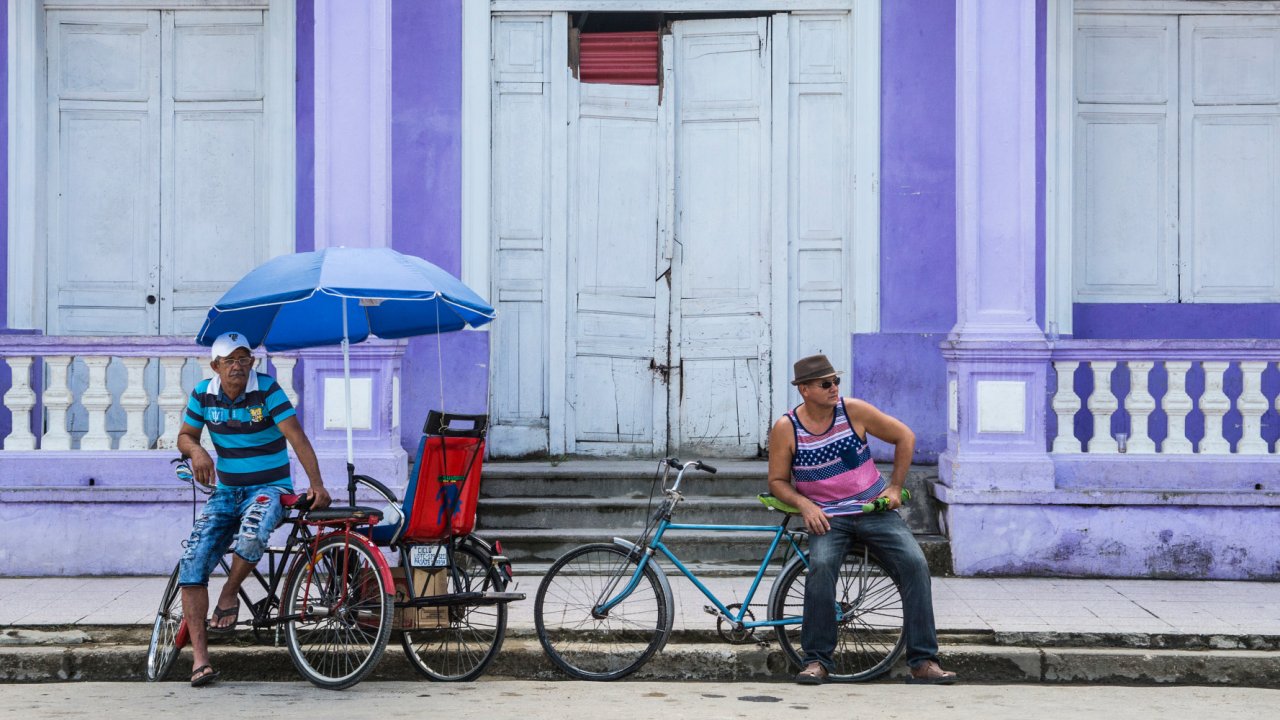
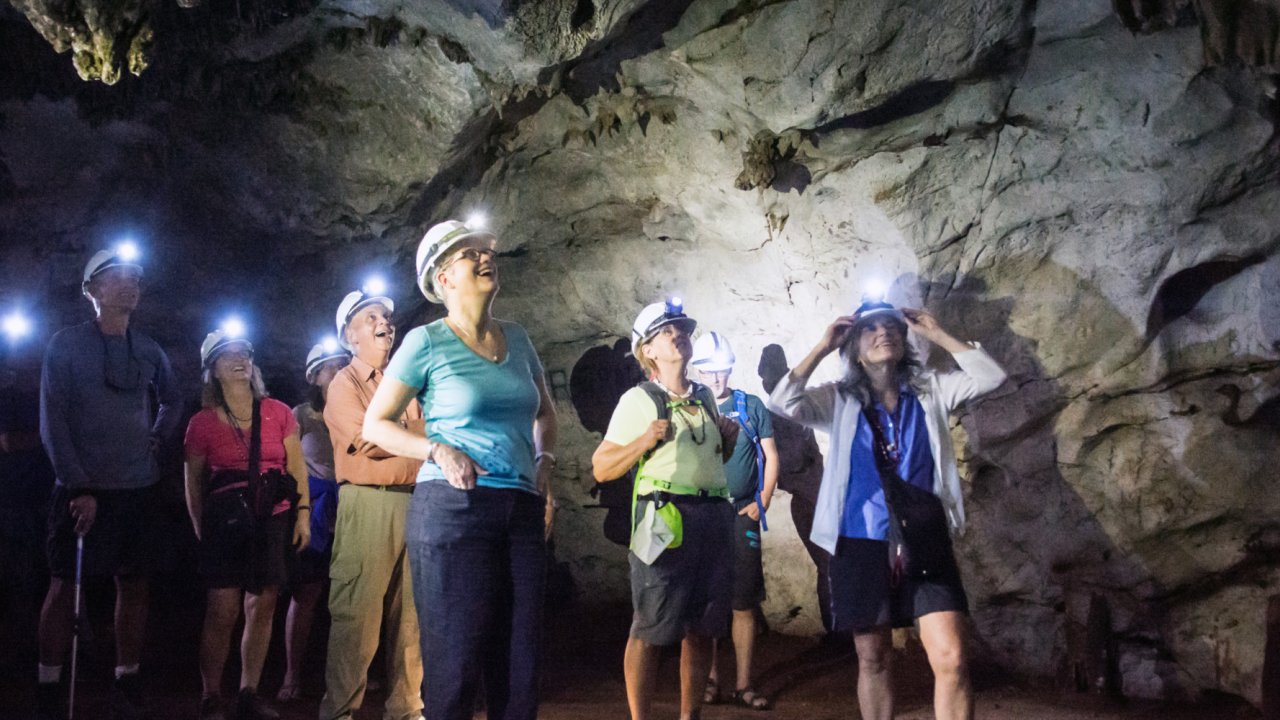
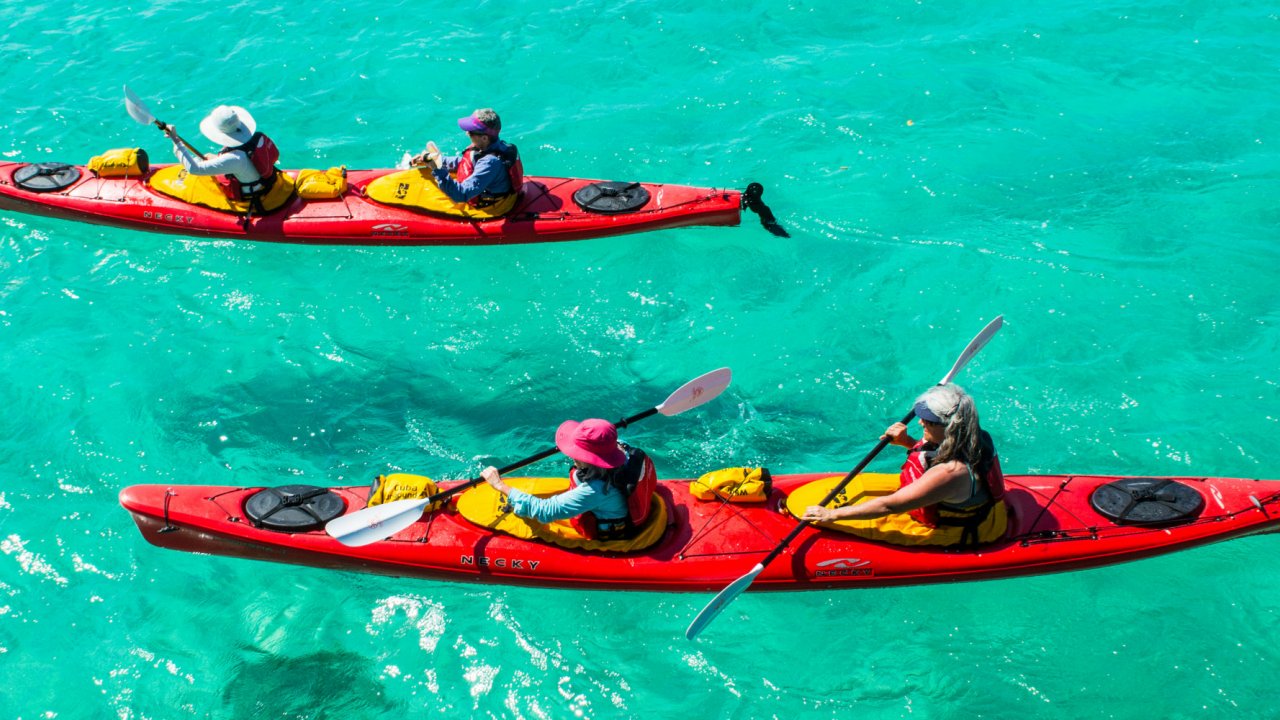
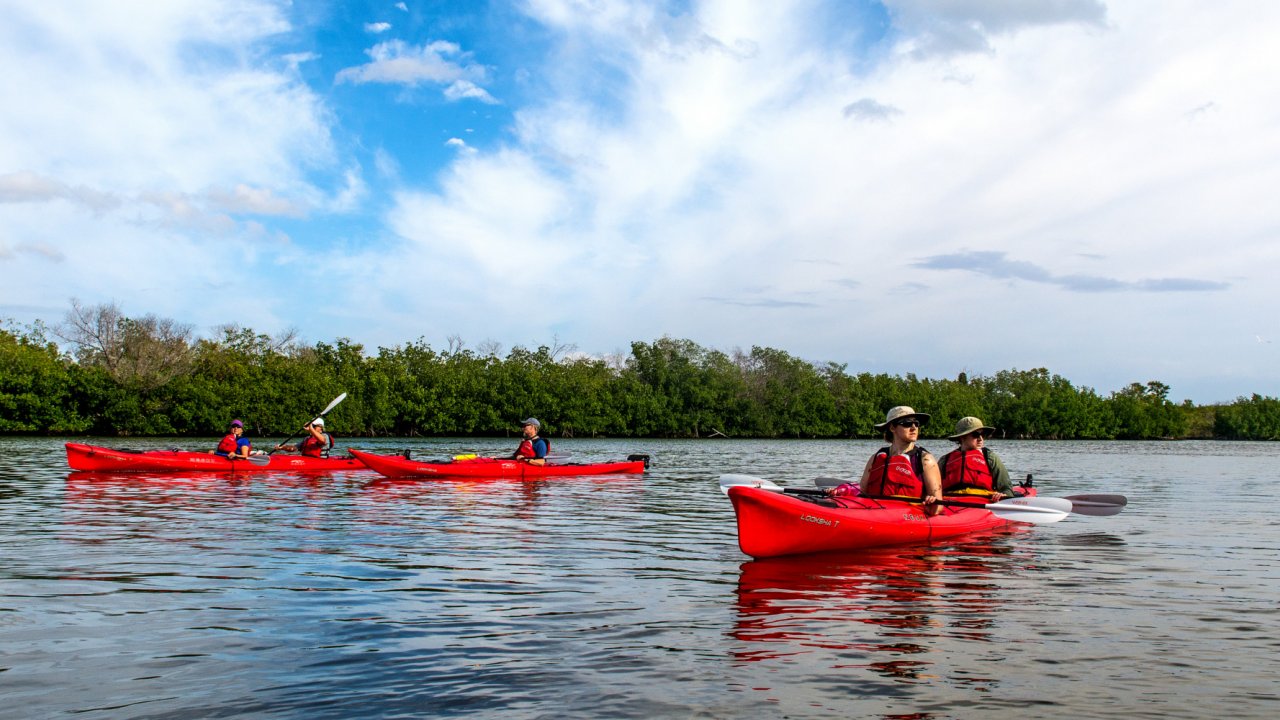
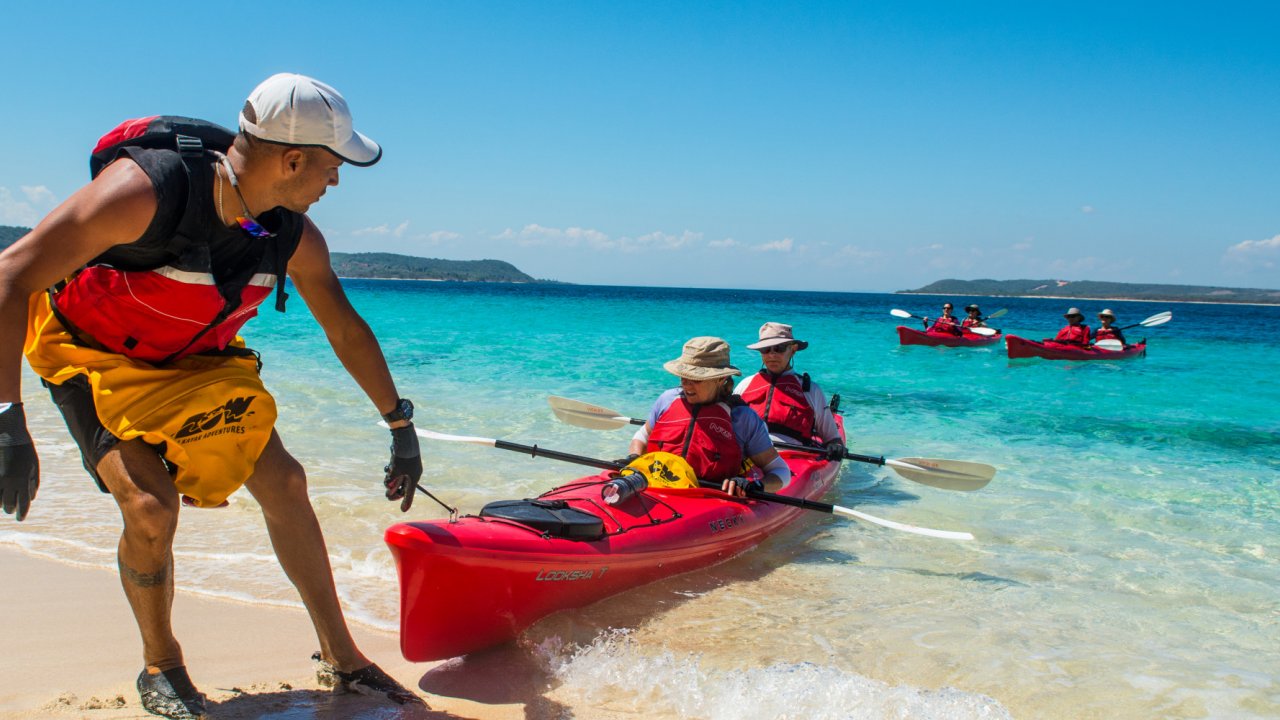
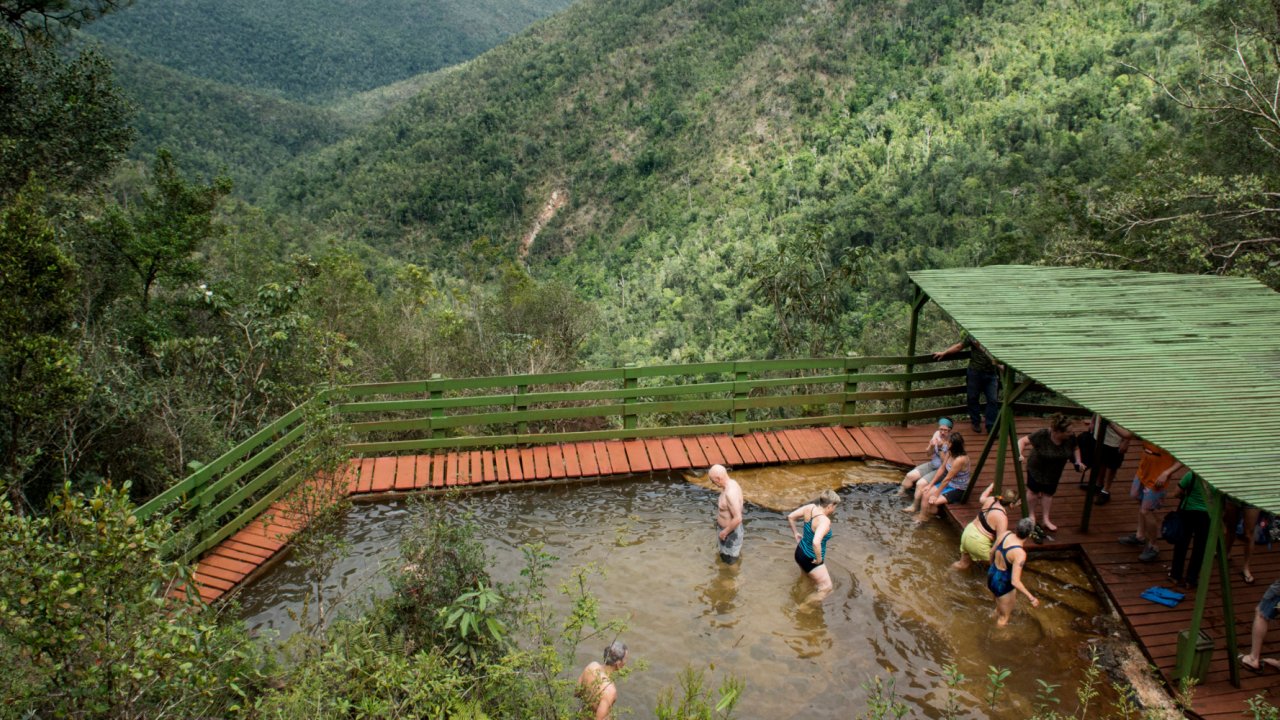
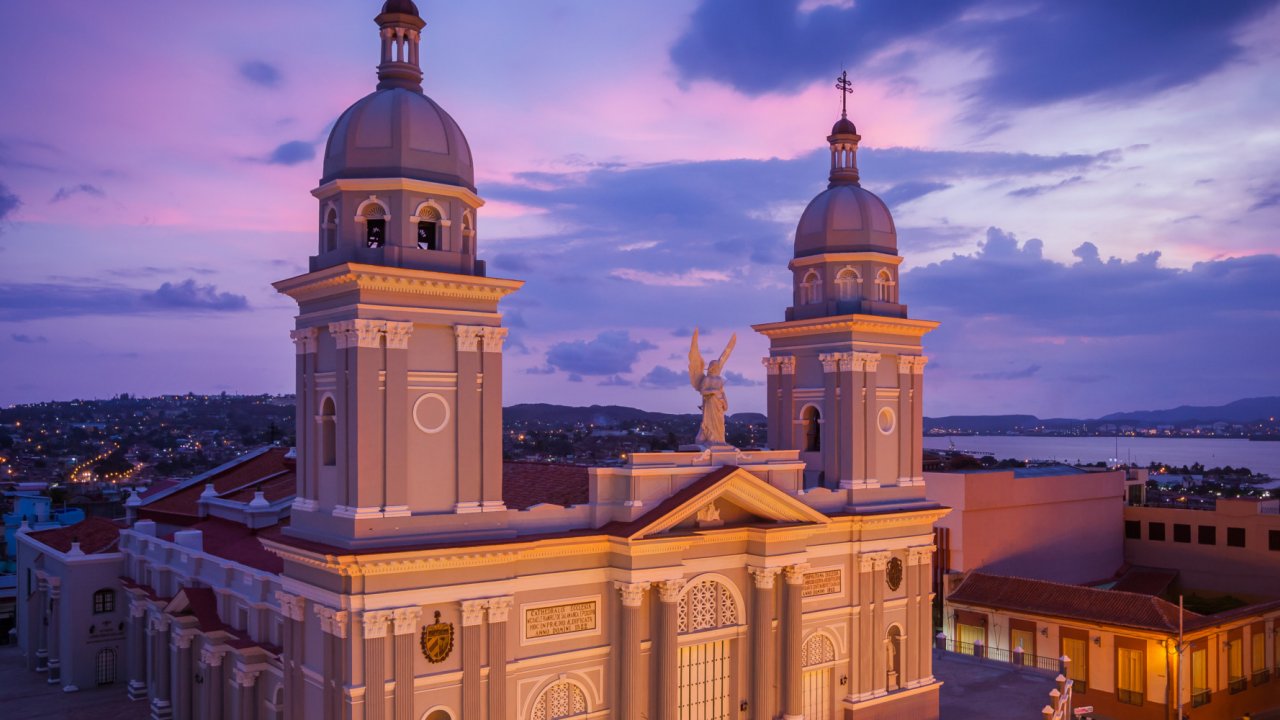









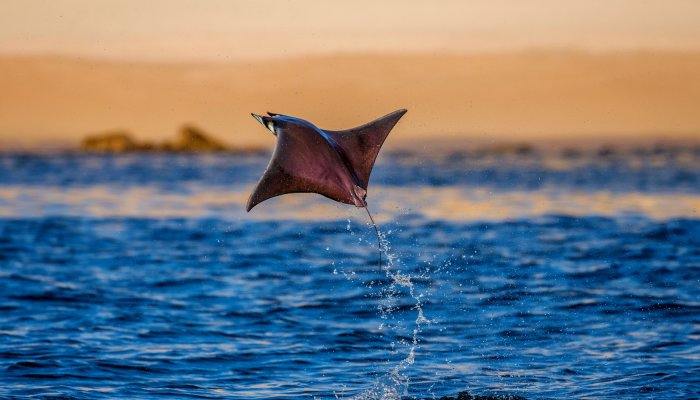
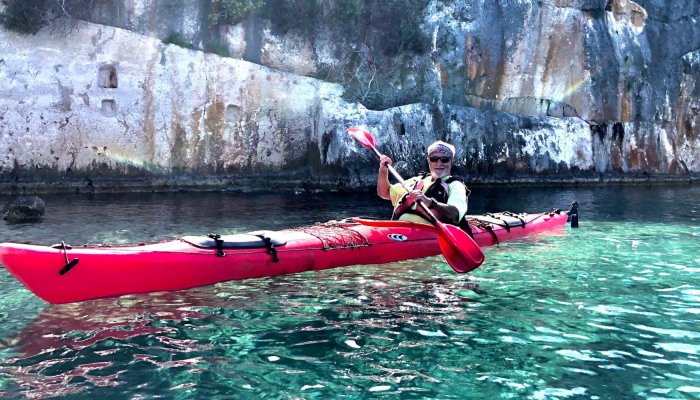
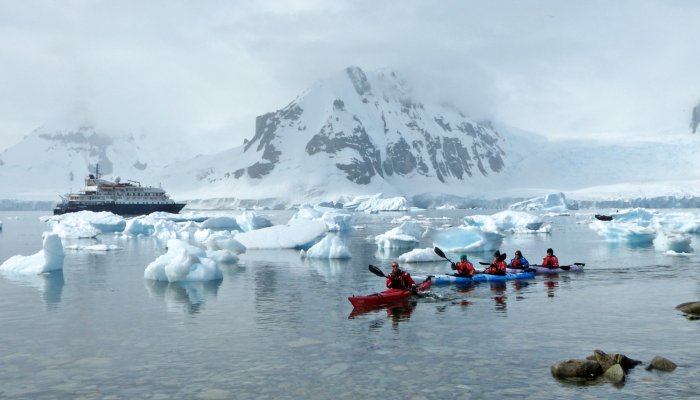
Reviews
The Magnificence of Cuba
After having the trip of a lifetime on a bicycle tour with Cuba Unbound, we couldn’t pass up the opportunity to experience the other side of the country in a kayak. As was true with our first trip, everything from start to finish was fantastic. Knowing that you’ll be taken care of by guides who seem to enjoy the trip as much as you do—all the while knowing that they’re ready to jump in and solve any problem that may arise—is incredibly comforting. Our sole responsibility was to have fun. The planning was superb, the accommodations lovely, and the food delectable. We saw and experienced so many wonderful things in the days that went by far too quickly, that it may be time to think about going back. ROW rocks!
Kayaking, birding, music, and much more!
Take us there again! The kayak equipment and planning was flawless. Our Cuban guides took us to remote birding sites--by kayak or on foot--and to hear cool music and visit historic location. This was our second kayaking trip with ROW Adventures. The other was to the Galapagos Islands and Bolivian Highlands. ROW has become our go-to outfitter.
Add your review